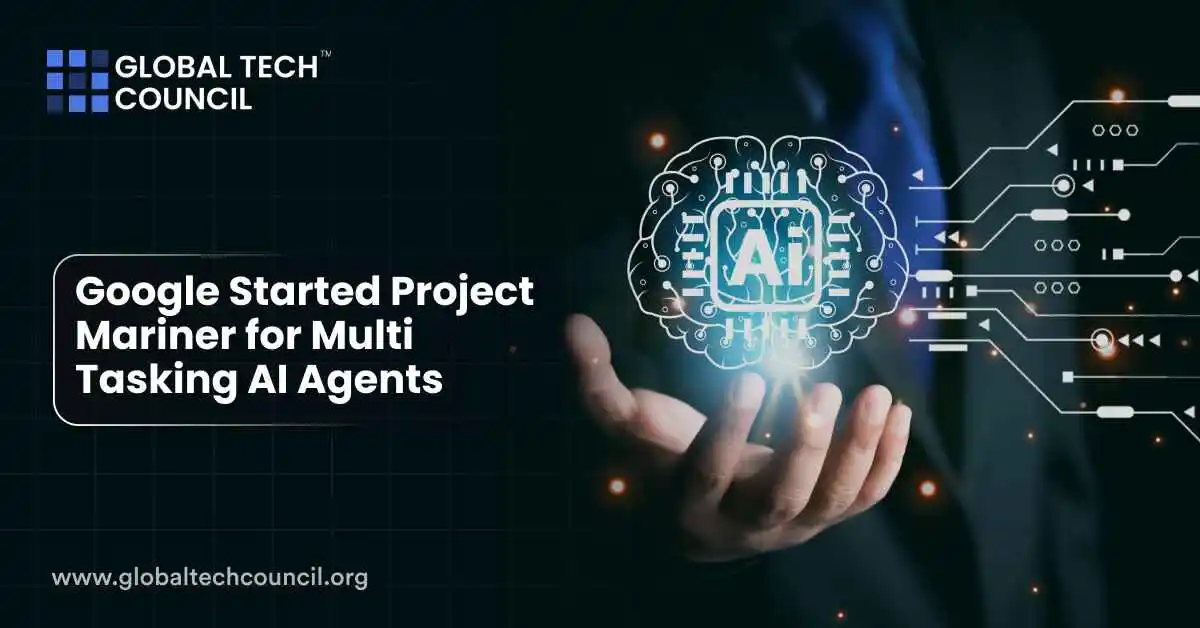
From filling out job applications to comparing prices across shopping sites, Mariner is built to multitask. It can handle multiple browser tabs, complete forms, gather information, and more — all at once.
What is Project Mariner?
Project Mariner is a prototype AI agent developed by Google DeepMind. It lives inside your browser and uses the Gemini model to understand what’s on the screen, make a plan, and take action. It works through a process called Observe–Plan–Act.
Here’s how it works:
- Observe: Looks at what’s currently displayed in your browser tab
- Plan: Uses natural language understanding to figure out what to do next
- Act: Clicks, types, and navigates websites like a user would
Unlike basic browser automation, Mariner can follow context, switch tasks, and adjust its actions based on what it sees in real time.
What Makes Mariner Different
Other AI tools can help write emails or summarize pages. Mariner actually completes full workflows across the web. It doesn’t just generate ideas — it executes them.
This opens up new possibilities for professionals, teams, and even solo users who want to save time on repetitive or multi-step digital tasks.
Key Features of Project Mariner
Mariner is packed with features that make web automation smarter and more human-like.
| Feature | What It Helps With |
| Observe–Plan–Act Cycle | Sees your screen, makes a plan, then clicks and types as needed |
| Teach & Repeat | Learns tasks from your demonstrations and can repeat them later |
| Multi-Tasking Support | Handles up to 10 browser tabs and tasks in parallel |
| Natural Language Input | Works through simple prompts — no coding needed |
| Gemini Integration | Taps into Google’s advanced AI model for smarter reasoning |
Everyday Use Cases
Mariner is built for more than just tech demos. Here’s how people are using it:
Personal Productivity
- Automating email filtering or inbox cleanup
- Filling online forms (like travel booking or insurance)
Research and Data Collection
- Comparing products across sites
- Scraping job listings into a spreadsheet
Business Tasks
- Completing workflows like onboarding vendors
- Logging into portals and submitting reports
E-commerce and Shopping
- Tracking price drops
- Adding multiple items to different carts
Mariner vs Other AI Agents
Here’s how Mariner compares with similar tools in the AI agent space.
| AI Agent | Developer | Main Strengths |
| Project Mariner | Google DeepMind | Full web task automation, browser visibility, multi-tasking |
| Operator | OpenAI | In-app automation, task chaining |
| Auto-GPT | Open-source | Task planning with external plugins |
| Anthropic Claude | Anthropic | Safer reasoning and chatbot-style workflows |
Early Access and Integration
Project Mariner is currently being tested inside the Gemini browser extension. It’s rolling out to users on the Ultra plan and will expand to developers via the Vertex AI platform.
Because it runs in the browser, you don’t need to install anything extra. It’s designed to work directly with Google’s existing tools like Docs, Search, and Workspace. That means teams can automate admin-heavy tasks without switching platforms.
If you’re exploring workflow automation in your business or product, learning how these agents work is key. A Deep Tech certification can help you understand agent frameworks and web integration.
Marketers and team leaders looking to streamline operations could also benefit from a Marketing and Business Certification. And for automation through data pipelines or APIs, the Data Science Certification teaches how to use AI agents efficiently and ethically.
Final Thoughts
Project Mariner gives us a glimpse into the next era of AI — where tools don’t just respond to questions but take real action. By combining visual awareness with smart planning, it sets a new bar for what agents can do in everyday workflows.
For anyone juggling browser tasks, this could be the beginning of AI that truly acts on your behalf.